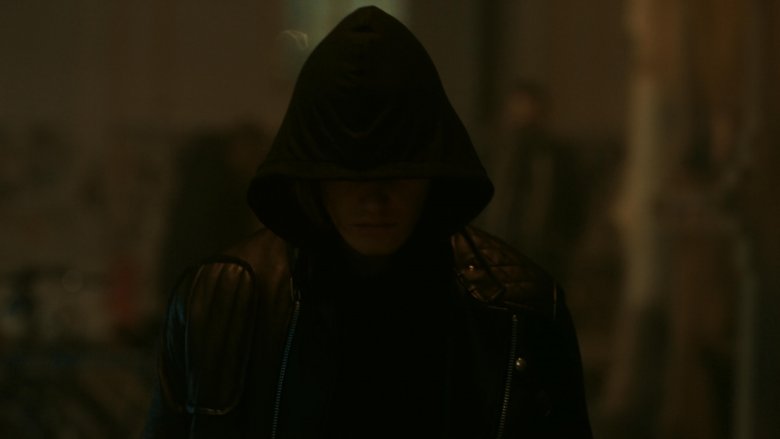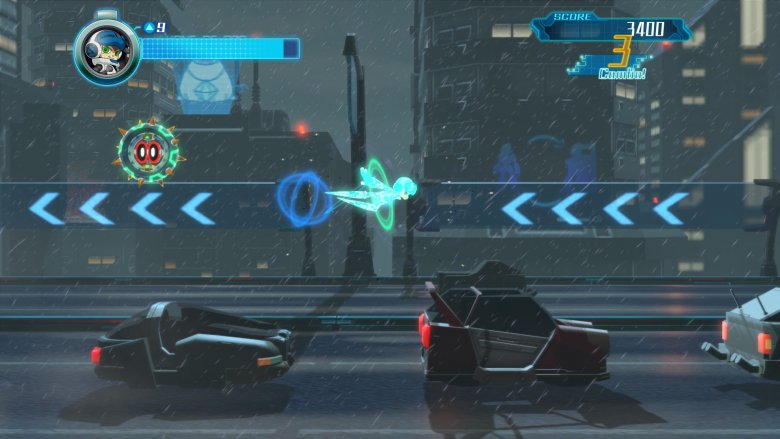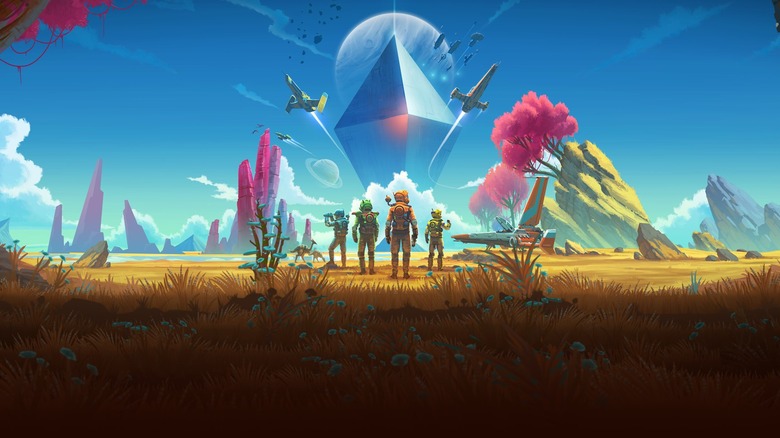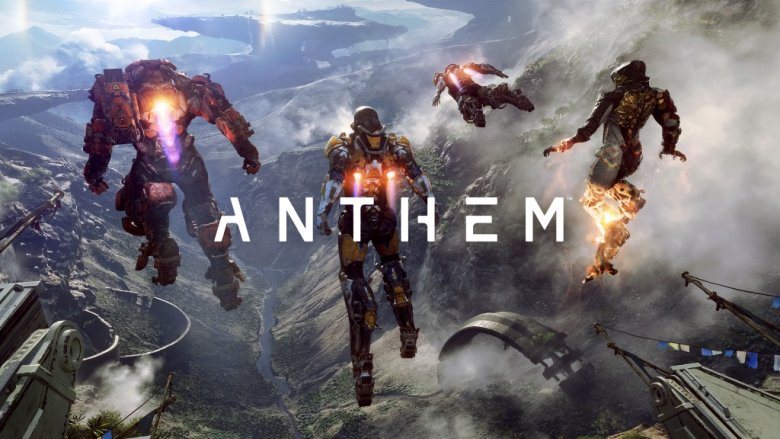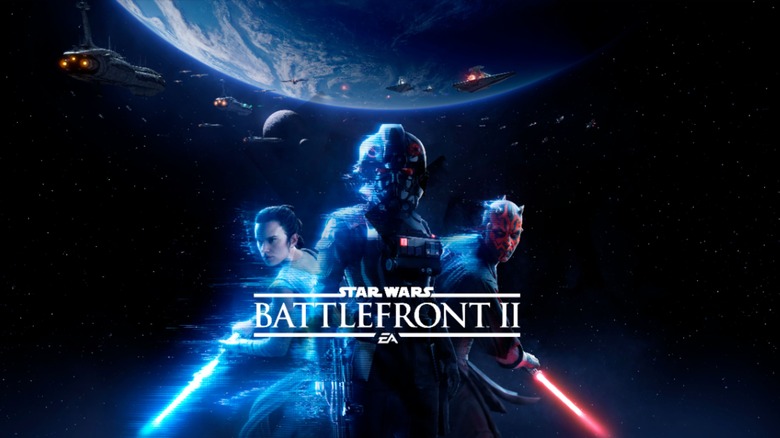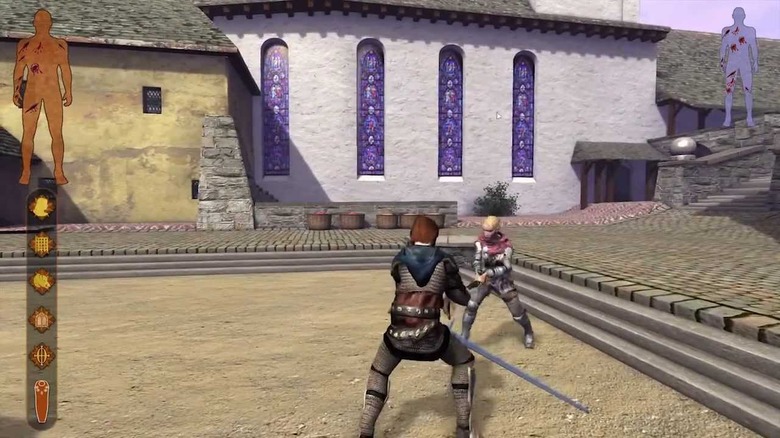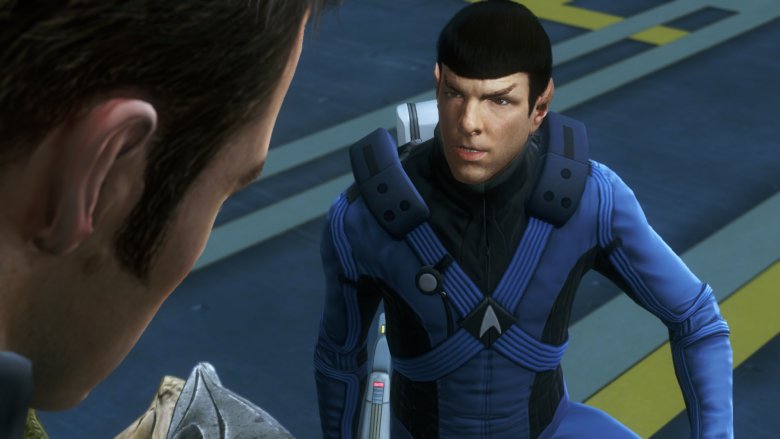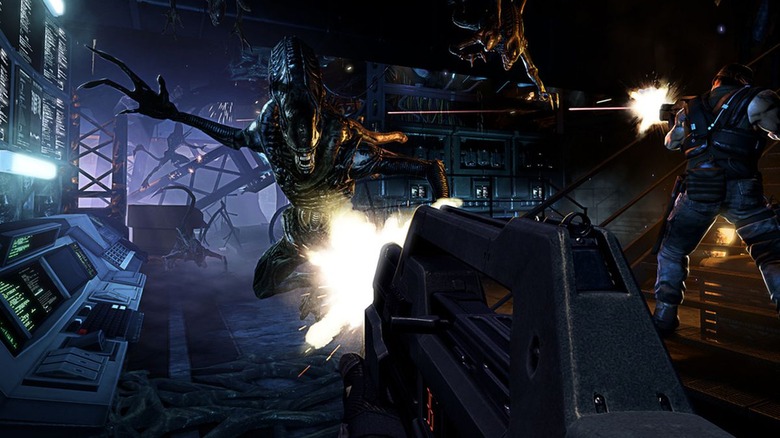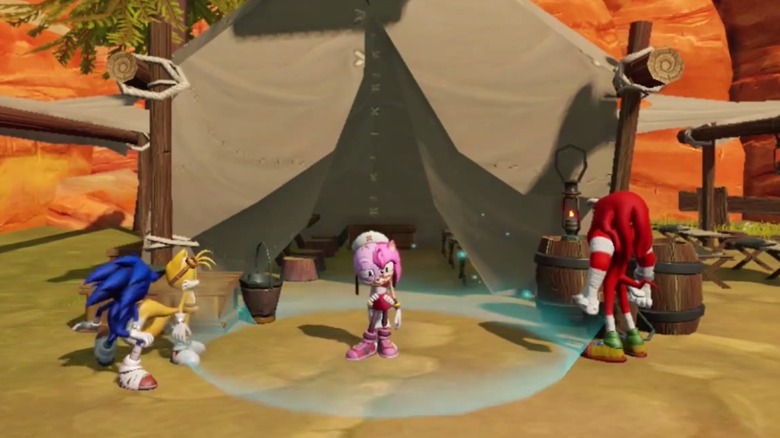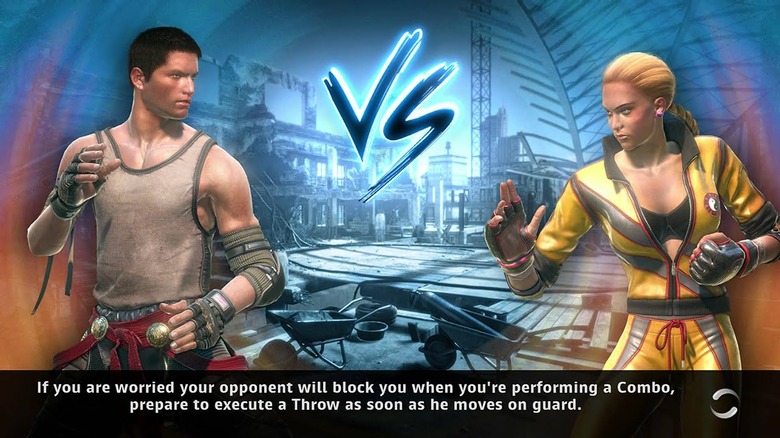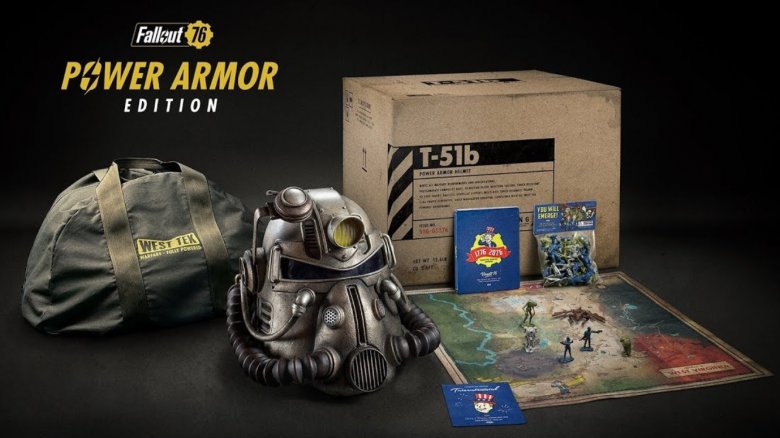Video Games That Were A Total Waste Of Money
As much as we joke about bad games, revel in memes of terrible glitches, and forever riff on silly, failed stories, we should keep in mind: bad games are downright dangerous. Not only do they mar the reputations of industry professionals and studios, but they also manage to suck up a lot of money. In some ways, failures can be more costly than hits. And that's just talking about the studios throwing cash at a poorly conceived concept. There are some infamous instances of players being outright robbed by games that never even saw the light of day.
This goes far beyond just a badly spent $60 on a game gone wrong. This list hashes out and rightfully chastises games that should have been required to pay their players back for their wasted time and money, because a lot of time and money went into hoping in vain that they'd actually be good. From crashed Kickstarters to AAA lemons, these games were outright wastes of money.
Mighty No. 9 was a crowdfunded flop
The tragic failure of Mighty No. 9 still smarts Kickstarter backers to this day. At one time, everything about the game seemed to add up to an unquestionable hit: riding on a powerful wave of nostalgia and Capcom's apparent hesitation to make another Mega Man game, Mighty No. 9 promised to pair all the best bits of 8- and 16-bit gaming with modern tech. It even had the magic touch of Keiji Inafune, who worked on the original Mega Man games. Mighty No. 9 quickly gained attention and tens of thousands of backers throwing money at the project. For their fundraising efforts, backers were promised copies of the game, retro-style manuals and artbooks, plushies and much more. Over 2,000 people pledged $250 in order to get signed copies of art books and special posters.
Including PayPal donations, Mighty No. 9 amassed $4 million, blowing past their original goal of $900,000. This meant that developers would have more budget for more fun extras like a support character and ports to various consoles. So what happened? Mighty No. 9 was relentlessly delayed, the release date continually pushed back, and backers were left to wonder where was the game their money had paid for. Upon its eventual release, Mighty No. 9 looked like it had a $4 budget rather than $4 million. The game was a major flop with serious technical issues and the eventual physical rewards were just as lackluster. This Mega Man spiritual successor was dead on arrival.
No Man's Sky made us scramble for refunds
Don't be surprised: we couldn't talk about wasting money without acknowledging the crashed hype train of No Man's Sky. For what it's worth, the game seems to have finally hit its stride and now enjoys a much less bitter playerbase. Back in 2014 when we first heard the words "procedurally generated planets," we couldn't help but have high expectations for this love letter to peaceful space exploration that Hello Games appeared to be artfully penning. However, upon release, it quickly became apparent that No Man's Sky wasn't the next big thing in gaming. It was the next big flop. Many players experienced game-breaking bugs and a general feeling that this wasn't the game they thought it was — you can't even ride the big alien animals!
The controversy around No Man's Sky led to uproar, death threats, and outrage over refund policies. People wanted their $60 back. It's easy enough to refund games on Steam, but other platforms like PlayStation ... not so much. In the fallout, players were treated to the nasty surprise that you can refund a game up to 14 days after purchase, provided you haven't started downloading it. If you have, then you are only eligible for a refund if the content is somehow faulty. While not everyone had the displeasure of finding their game glitchy, many were simply dissatisfied and found that if they had bought the game through the PlayStation Store, they had essentially wasted their money and weren't going to get it back.
Anthem wasn't BioWare's best
BioWare isn't exactly known for making bad games. Quite the opposite: a BioWare game inspires hype and excitement, great reviews and beloved games. So what happened with Anthem? Leads at BioWare like Casey Hudson have outright stated that they too are pretty disappointed with the game. Fans are unimpressed with the world abandoned by the old gods, and the technical issues that have plagued the game since the start. Meh reviews have added up, and Anthem is officially the worst-reviewed BioWare game, following up the lackluster Mass Effect: Andromeda. Remember what we said about bad games being dangerous? There have been some concerned murmurs about BioWare and whether EA will ruthlessly axe the studio after two poor performances, as it has with other studios before.
Unlike No Man's Sky, the technical issues are so prolific that Sony has been handing out refunds directly. It's hard for Sony to argue when players have reported that Anthem has outright shut down their console or crashed their system. Many gamers have looked at the widespread reports of bugs and unimpressive content and decided to wait until the game is better fortified with updates and/or later on sale. Anthem as it is, for many, isn't worth the price tag.
Star Wars: Battlefront 2 gambled with our time and money
You know what's cool? Swinging a lightsaber around as Darth Vader himself. You know what's not cool? Having to pay a bunch of money for the sliver of a chance to do it. When you blow 60 bucks on a Star Wars game, it justifiably comes with the expectation that you'll get to do cool Star Wars things: play as character from the movies, fly ships from the movies, and not have to pay extra to do so. Star Wars: Battlefront 2 quickly became face of the loot box controversy that continues to plague the games industry.
In order to play the game as fans imagined it, gamers would have to spend more money, real-life money, on loot boxes which contain random benefits and items. The gambling nature of this mechanic meant that even as players spend gobs of cash, they still might not get what they wanted, like the ability to play as Darth Vader. But hey, EA said, you could still unlock benefits the good old-fashioned way through endless grinding. Days and days of grinding. Battlefront 2 was clearly rigged in a way that favored players who paid for the content. No one likes pay-to-win games, and they especially don't like them when they've already paid the AAA price. Battlefront 2 offered the chance for players to fruitlessly waste money, so much so that even those who didn't revolted and wanted the initial $60 they had spent back.
Midora went broke
A gorgeously rendered original story reviving the best of classic 2D action-adventure games? Where do we sign up? At one time, fans ready for a modern rendering of old-school nostalgia could back Midora on Kickstarter. The game offered dungeons, crafting, alchemy, and eye candy in the form of colorful pixel art. Over 3,000 people jumped aboard, pledging anywhere between $10 to $4,000. Over the course of 14 months, excitement built as Midora exceeded the $60,000 goal and totaled out at $73,470. The game's director, named only by the handle Mhyre, must have been ecstatic considering that they'd spent all their savings on hiring developers, right?
The truth was more complicated. Mhyre confessed that they knew that it would take way more money to make Midora a reality. They said that they needed approximately double what they had, and made a call to possible publishers and investors saying, "We have all that you need to make a decision and we're ready to be generous, provided that you help us in the first place. We want things to move on, to progress."
Mhyre didn't find any buyers, and the Midora money was gone. Where did that leave those 3,359 backers? Mhyre promised refunds ... eventually. First, they had to pay back family and friends, and find a new job to support themselves. While its nice that they didn't drop off the face of the earth, those waiting for refunds shouldn't hold their breath.
Clang caused a Kickstarter clatter
Neal Stephenson, famed for sci-fi hits like Snow Crash, looked at video games and decided it was time for a revolution. A self-described "swordsmanship geek," he saw that swordfighting in video games was unrealistic, and more importantly, unfun. Considering the bright future of gaming gear, VR, and haptic feedback, he wanted to make an all new, ultra realistic experience: Clang.
Clang promised high-precision motion controls to support moves from real sword arts: "Different stances, pommel strikes, grappling, feints, and parries." The project exceeded its $500,000 goal, but ran into a familiar Kickstarter problem: there wasn't enough money. And even with the prototype they had, the game wasn't meeting expectations. An update said, "The prototype was technically innovative, but it wasn't very fun to play." Apparently, historically accurate swordfighting just isn't as cool as it sounds. Fans of swordsmanship would never get to see the game they paid a minimum of $25 for. According to Stephenson, a few dozen people received refunds and welcomed backers to ask for them, but shut the door on refunds three months later. The comments section was surprisingly forgiving, save for a few scuffles and one vague threat of a class action lawsuit.
The Quiet Man went out quietly and confusingly
Remember when Square Enix was being super mysterious and wordlessly presented us with The Quiet Man, a game that could be played in one sitting and promised that it was "seamlessly blending high-production live action, realistic CG and pulse-pounding action gameplay" in order to deliver a motion picture-esque experience? We got a glimpse at 2018's E3, a trailer that did indeed go from live action one moment to some pretty slick gameplay the next. Later upon release, we had to wonder how much money that spot cost during E3, because however much it was, The Quiet Man wasn't worth it.
Playthrough is indeed speedy, taking only around three hours, but the story that allegedly drove the game was murky at best. No one knew what was going on. The game lacked dialogue, a way to simulate the experience of the deaf protagonist, Dane, but a patch later added words to clue players into what was going on. Even then, the writing was blase and purposefully edgy to the point of cringe. The combat did little to make up for the poor story, AI was clumsy, and there weren't any real stakes: Dane was OP. And the game wasn't worth the three hours of playtime, let alone its price tag.
Star Trek: The Game exemplifies why not to make video game movies
Do we really have to state the obvious? Video game movies are bad. Video games based on movies are usually even worse. No matter how exciting, amazing, incredible the film, the games based upon them are meh at best; that includes blockbuster adventures like Pirates of the Caribbean, James Cameron's Avatar, and Star Trek. These games are garage sale fodder, plain and simple.
Star Trek: The Game is just one example of a bad movie video game. Kirk and Spock might be voiced by Chris Pine and Zachary Quinto, but they certainly don't move like them. They're stiff, uncanny imitations who really don't do anything all that interesting. The pace is glacial, hampered by dumb minigames, frustrating mechanics, and broken AI. Star Trek: The Game felt like a slapped-together side project that was more than eclipsed by the film, and thank goodness for that.
Aliens: Colonial Marines is still bleeding money
Okay, we'll take back what we said about games being bad when they're based on movies. The exception to the rule is clearly exemplified in any game based on Aliens. Minus Aliens: Colonial Marines, of course. What went wrong with Colonial Marines is a not-so-classic tale of development hell and wasted money. Sega paid goodness knows how much for the rights to the intellectual property and then gave Gearbox a ton of cash to make a game based on everyone's favorite sci-fi horror series. Six years go by, and the first-person shooter turns out to be a disappointment, nothing like its promising trailers.
So Colonial Marines wasn't the success that anyone wanted it to be, but this game would continue to bleed money. Sega and Gearbox were both sued for false advertisement, and while Sega offered to settle to the tune of $1.25 million, Gearbox refused to give in. Furthermore, Gearbox filed requests saying that they never should have been included in the suit. They said that Sega was to blame for any false advertisement, and besides, Gearbox had sunk millions of its own money into the game. The deposition claimed, "During the development process, Gearbox supplemented Sega's development budget with its own money to help Sega finish its game; Gearbox's contributions to A:CM totaled millions, none of which was ever repaid." Yikes.
How Sonic Boom: Rise of Lyric almost killed Sonic
Chances are, the only way that you're familiar with this game is through either videos riffing on it or compilations of the game-breaking, mind-bending glitches. Not really a true Sonic game, Sonic Boom: Rise of Lyric is based on the Cartoon Network animated show, wherein Sonic, Knuckles, Tails, and Amy are teamed up. Though each character has their own powers and abilities, the game was bogged down with bugs, a bad story, and surprisingly slow-moving characters.
But hey, Sonic has had a history with bad games, like 2006's infamous iteration, and always managed to survive. It turns out, however, that Sonic Boom: Rise of Lyric and its 3DS sister Shattered Crystal were such big wastes of money that Sega questioned the viability of their own mascot. That's right: Sonic Boom almost killed the Blue Blur himself.
Disconnected: the Kinect is an expensive waste of plastic
The Kinect was a weak answer by Microsoft to the bombastic success of the Wii. Motion controls were trendy, with people utterly enraptured by the simplicity and ease of use in games like Wii Sports (so long as they were remembering to use their wrist strap and not flinging Wiimotes at TV screens). And maybe the Kinect had some success in replicating those fun times. Some. Kinectimals was cute. But the Kinect itself wasn't nearly as well-received as the Wii, and it was seriously costly to manufacture. Allegedly, a Kinect cost nearly as much as an Xbox One to create. Oof.
However expensive Kinects were, they never managed to read motion inputs as well as they were purported to. Thus games like Star Wars: Kinect and Fighter Within left players flailing fatuously, looking like fools rather than Jedi or martial arts masters. These games may have allowed players to break a sweat, but they were just an exercise in frustration. Fighter Within was further marred by a bad story, an insufferable protagonist, and the kind of broken controls players had come to expect from a Kinect game. It was a waste, and so was the peripheral it was made for.
Fallout 76 and the case of the $200 trash bag
There's nothing wrong with getting caught up in the hype when it comes to a new addition to your favorite franchise. There's nothing wrong with wanting more than just a physical copy of the game. Merch is cool, merch is great, but Fallout 76 merch was not cool or great: it was cheaply made but somehow cost $200. Fallout 76 was a disappointing flop, and while most one-time fans were out around $60 in pre-orders, others had sprung for the $200 Power Armor edition of Fallout 76.
This edition included the lackluster game, of course, but what caused so much contention was the bag. In the advertised image of the Power Armor edition, a military-style canvas bag is featured. What fans received instead was what one purchaser called a "ghetto a** nylon trash bag." What rankled more was the knowledge that Bethesda knew full well that the bag wasn't canvas, and didn't have any intentions initially of rectifying this bait and switch. After all the hullabaloo, however, they decided to graciously grant upset players with 500 Atoms for their $200 trouble.

